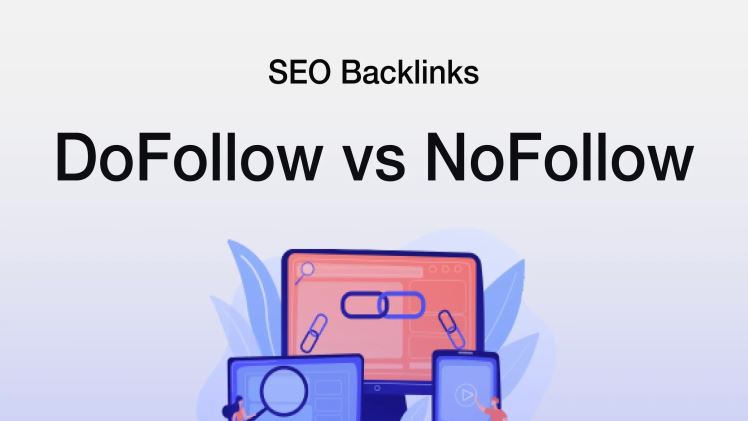The Ultimate Guide to Understanding Dofollow Vs. Nofollow Backlinks

A strong SEO technique that tells search engines that your material is quality and reputable is a dofollow backlink. However, it’s essential to maintain a balanced link profile by incorporating nofollow links.
Infographic outreach, establishing broken links, and guest writing are ways to achieve this.
Dofollow Backlinks Pass Link Equity
Links that are dofollow transfer “link juice,” or link equity, to the pages they connect to. Search engines consider This one of the most important factors when ranking you.
Search engines are informed by a high quantity of dofollow backlinks that point to your website as popular and relevant to the topics you write about. Higher rankings in search results are the effect of this.
In addition, do follow backlinks, which are an excellent way to build credibility and visibility in your industry. For example, suppose a reputable fitness industry blog writes an article about your product or service and includes a dofollow link to your website. In that case, it will improve your credibility and help you rank better in search engine result pages. For these reasons, building quality dofollow backlinks from relevant websites in your industry is essential. However, avoid using spammy tactics that could hurt your ranking. To begin, know what are dofollow and nofollow backlinks?
Nofollow Backlinks Don’t Pass Link Equity
When a website links to another site, it’s passing on its authority (also known as ‘link juice’). However, when that link has the “rel=” nofollow”” attribute in its code, this tells search engines not to follow or crawl the linked page. Nofollow links don’t have any SEO value, and search engines ignore them for ranking purposes.
Comprehending the distinctions between dofollow and nofollow backlinks is vital for your entire search engine optimization approach. Dofollow links are a backbone, providing a direct ranking boost to the websites they’re linking to. On the other hand, nofollow backlinks offer diversity and can be helpful when building your links profile. Whether you’re adding links in a blog post, forum comment, or advertising campaign, it’s crucial to understand the impact of each backlink type to make strategic decisions about how you build your link profile. Ultimately, this will help you maximize your potential for success. Then, you can focus on achieving the results you deserve.
Dofollow Backlinks Are More Valuable
Anyone who knows anything about SEO will eventually face the nofollow vs. dofollow debate. It’s not a debate that’s easy to answer, but it can affect your website’s ranking.
Dofollow links are more valuable for SEO, as they pass link equity and can improve your PageRank. However, it’s essential to remember that nofollow backlinks can still be valuable for your website if they come from authoritative and relevant sources.
Your backlink profile should ideally contain a mixture of dofollow and nofollow links to make it appear diverse and natural. However, be careful not to have too many nofollow backlinks, as Google may penalize you for having an unnatural link profile. Instead, improve your SEO by building high-quality Dofollow backlinks from relevant and authoritative websites. Your PageRank will improve, and you’ll see more organic traffic to your website.
Nofollow Backlinks Are More Valuable for Traffic
Dofollow links convey to search engines that a website has authority and is worthy of being displayed on the results page, which is why they are brimming with “SEO juice.” It is untrue to say that nofollow backlinks are worthless; they can be just as beneficial as dofollow ones for increasing website traffic and fostering connections with other bloggers and websites.
Moreover, nofollow links can also be used to avoid passing link equity to low-quality or irrelevant websites. For instance, use a nofollow link to a blog post that visitors will find fascinating and use to learn more about the subject or find related items on your website.
Having a balanced link-building strategy is crucial for your SEO. Dofollow and nofollow links have their uses, so ensure you include both in your campaigns. To ensure your backlink strategy is effective and balanced, consider partnering with a Birmingham SEO Agency that can help you build high-quality dofollow backlinks and maintain a diverse link profile. You can quickly identify if a backlink is dofollow or nofollow by hovering over the link and clicking “Inspect” (or a similar option, depending on your browser). You will see the rel attribute in the source code window.




